Trying the Hadza hunter-gatherer berry and porcupine diet
- Published
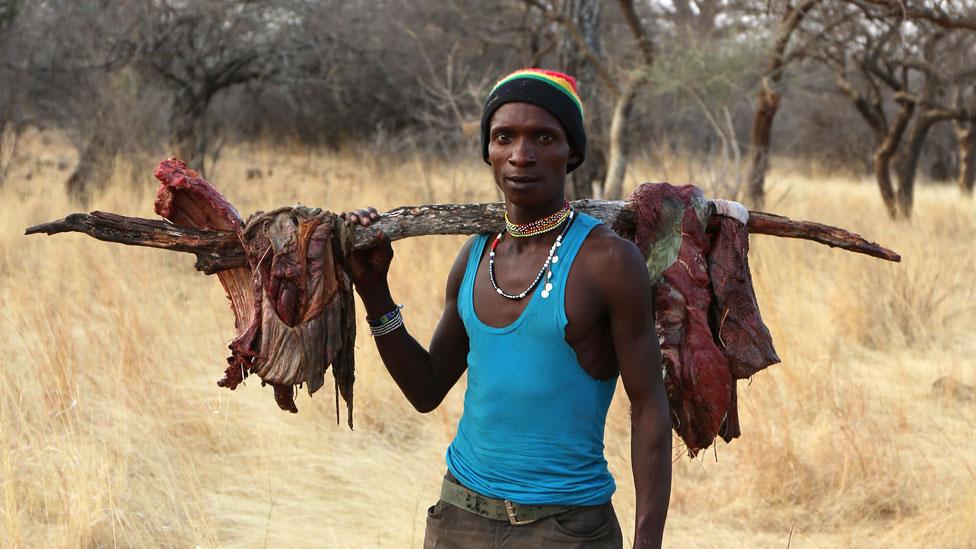
The Hadza are one of the last remaining hunter-gatherer tribes in the world. It's thought they've lived on the same land in northern Tanzania, eating berries, tubers and 30 different mammals for 40,000 years. The BBC's Dan Saladino went to watch them foraging and hunting, and to ask whether their diet holds lessons for everyone.
WARNING: Some readers will find images of hunted animals disturbing
As I lay flat on my stomach, I put my head inside the dark tunnel and sniffed.
Animal...
But I couldn't believe someone was actually going to slide inside and flush the animal out. That someone was Zigwadzee. And the animal? Well, that was a porcupine.
After handing his bow and arrow and honey axe to a fellow Hadza hunter, Zigwadzee stripped off, took hold of a short, sharpened stick and disappeared down the hole.
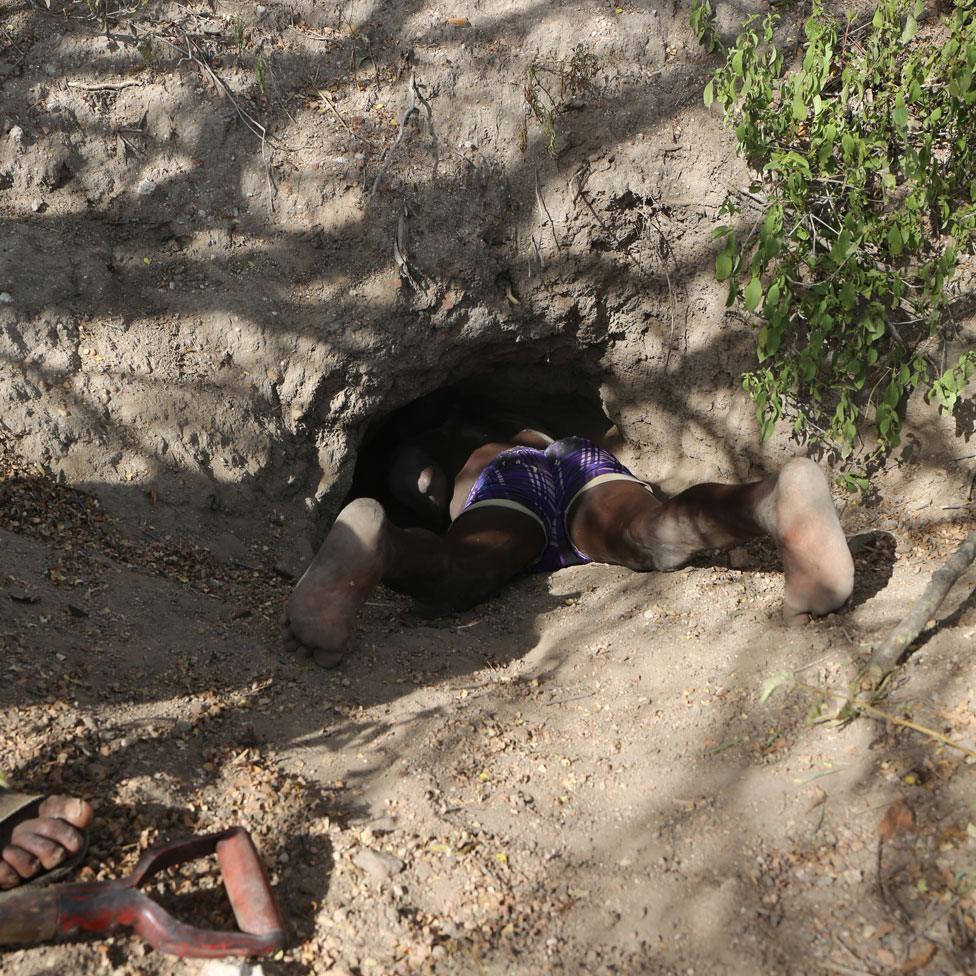
Perhaps, I thought, he was the smallest of the group and so the obvious choice. But the more I watched, the more I realised it was because Zigwadzee was the one with the least fear of what might lurk there - the cobra and mamba snakes, the reptiles, fleas and ticks, and the porcupine with its bristling 35cm (14in) quills.
Up to this point, my Hadza diet had been strictly vegetarian, as it is much of the time for these people. Handfuls of berries picked from bushes as we wandered the dry woodland savannah, over thorns, past acacia trees and through parched grass. There had been the occasional crunchy moist tuber dug up from just below ground and cooked on a quickly-conjured fire.
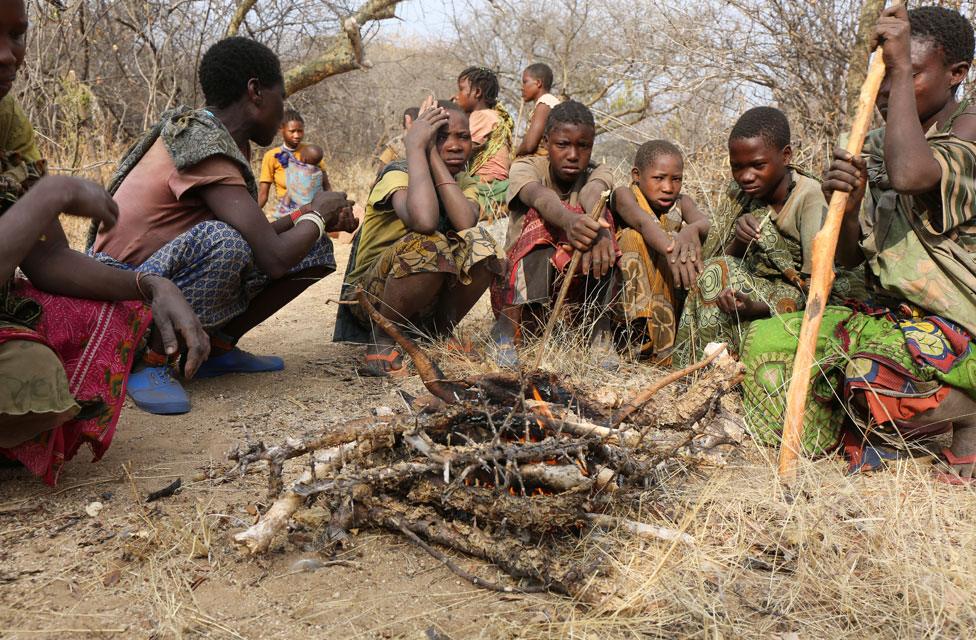
Berries and tubers, gathered by Hadza women, are the mainstay of the diet
There were also lots and lots of baobab fruit. The baobab tree's rattling pods of fatty beans, packed with a white, zesty chalk-like dust, are made into a drink of pure fibre and vitamin C.
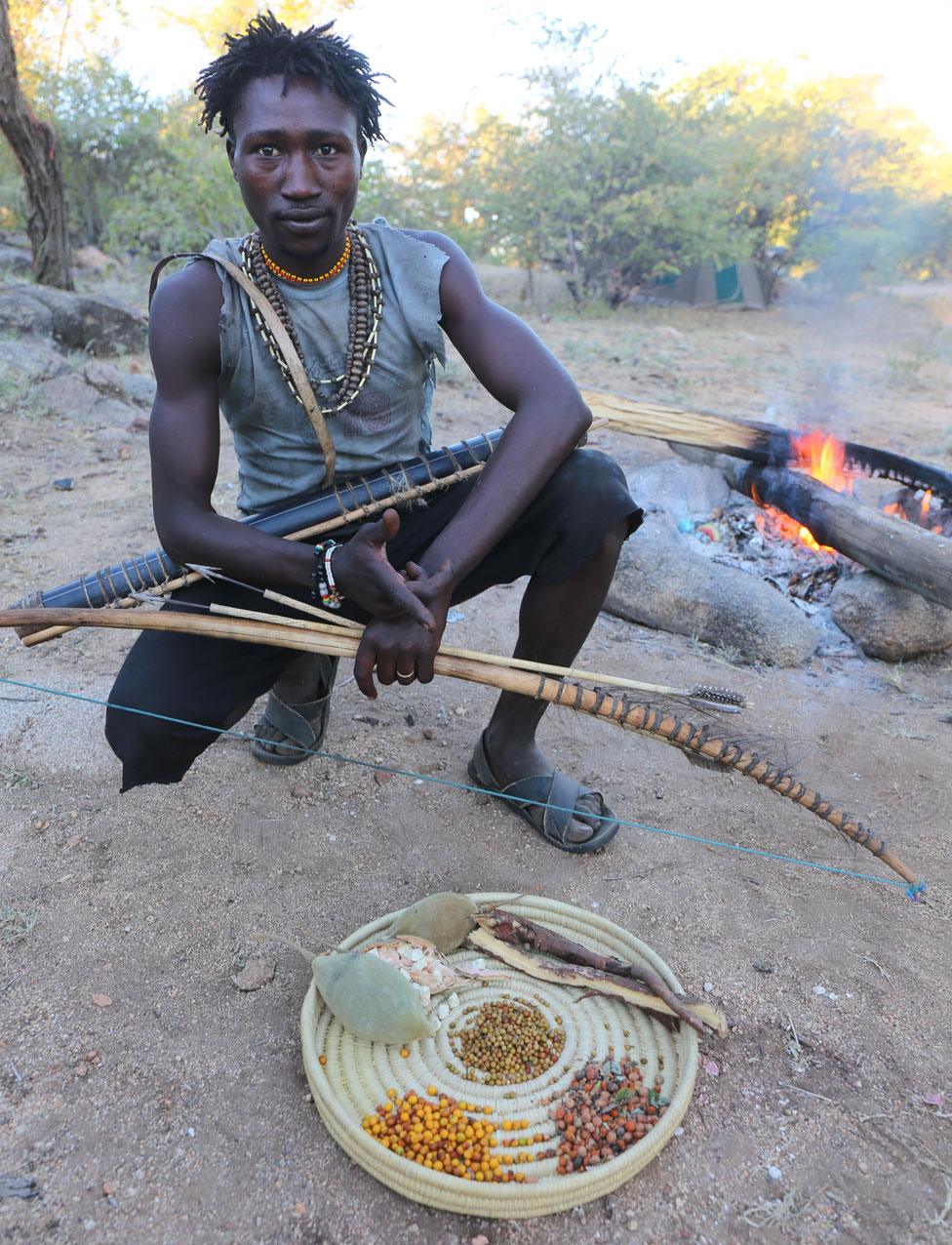
Baobab fruit are rich in vitamin C
Anthropologists noted decades ago that the Hadza are always hungry but never starving. Their enthusiasm for eating is matched by an abundance of ingredients around them, and the tracking and foraging skills needed to find them. All around us were foodstuffs I couldn't spot, but that Hadza children, even those as young as four, are adept at finding.
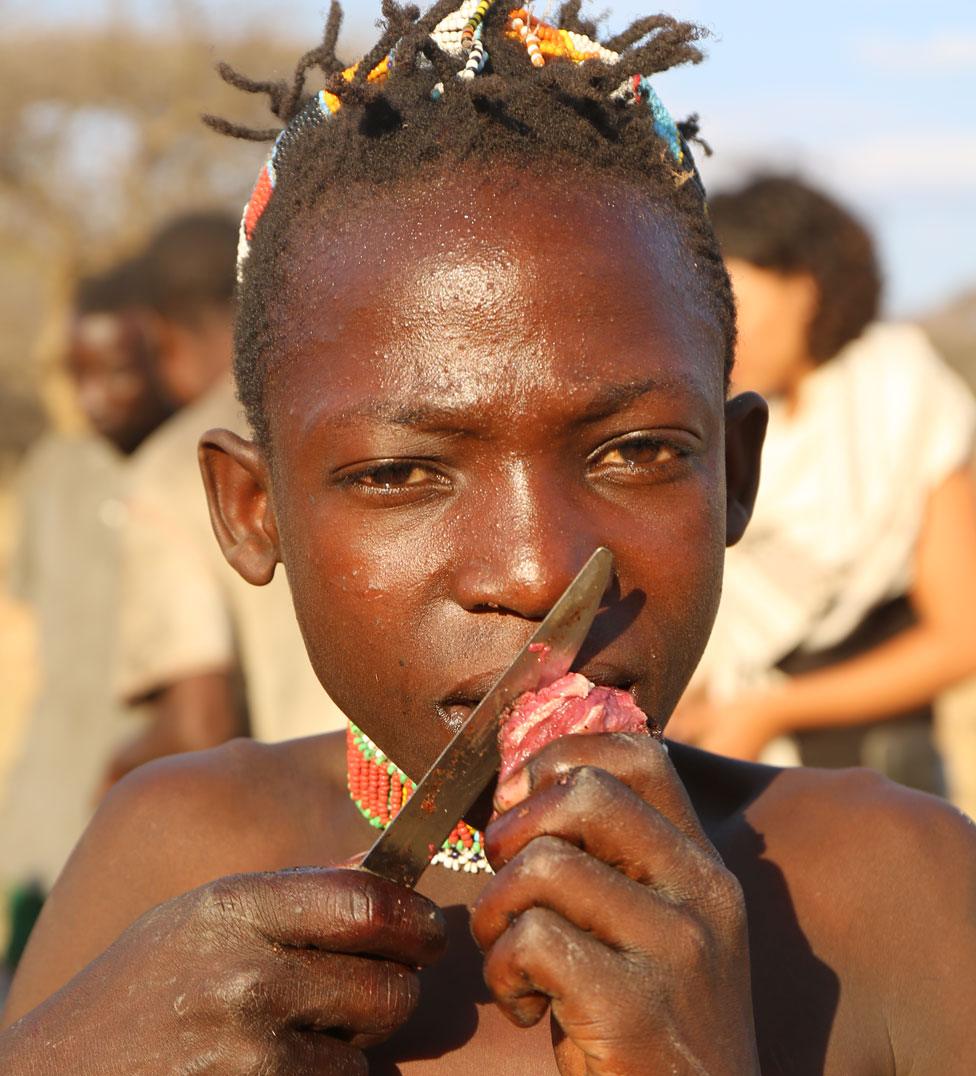
Soon all I could hear of Zigwadzee was a distant, muffled voice. He was 2m (6ft) underground inside a hot network of tunnels and chambers, where a porcupine was hiding. As he mapped out the animal's subterranean world, he shouted instructions to his fellow hunters above ground to close off any escape routes.
After 40 minutes, he re-emerged, covered in dust and a few fleas, ready to dig down further at the exact spot where the porcupine was located.
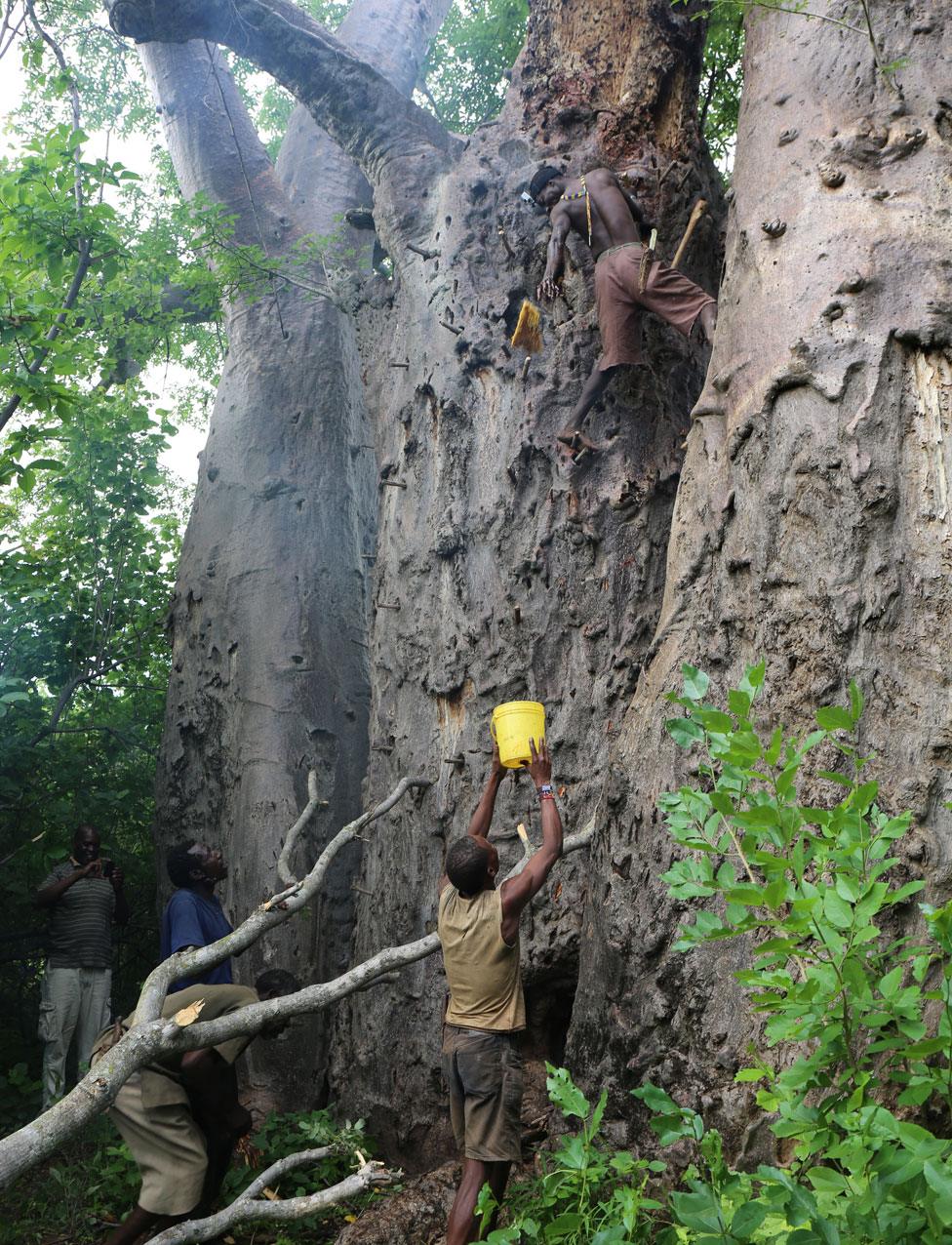
Sticks are wedged into the bark of the baobab tree in order to climb to the bees' nest
Although the Hadza number around 1,000 men, women and children, there are now thought to be only 200-300 pure hunter gatherers, who grow no food and practise no form of agriculture. These Hadza find farmers a curious and amusing lot. One asked me: "Why stand in a field all day and wait for weeks or months for food when you can eat berries from a bush, find as much honey as you can eat or spend an hour inside a porcupine den and feed an entire camp?"

Find out more

Listen to Dan Saladino's reports for the Food Programme on BBC Radio 4

This is how our ancient ancestors sourced their food and nourished themselves. The meals Zigwadzee and his fellow Hadza eat are our last remaining link to the diets on which humans evolved and through which our digestive system developed - including the complex community of gut bacteria we all have, weighing 1-2kg in an adult, the so-called microbiome.
There is now a growing consensus in the medical world that our gut microbiomes play a major role in the operation of our immune system, and that the more rich and diverse our microbiomes are, the lower our risk of disease. And it so happens that the Hadza, because of their diet, have the most diverse human gut microbiomes on the planet.
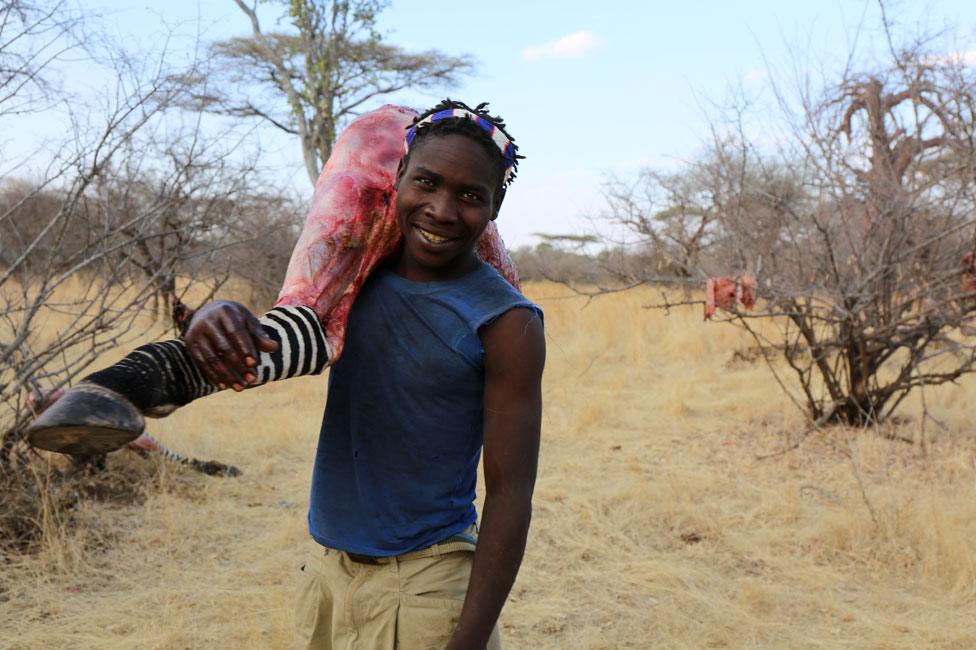
Poisoned arrows are needed to kill an animal as large as a zebra

Zebras are easier to kill in the dry season, because there are fewer watering places...
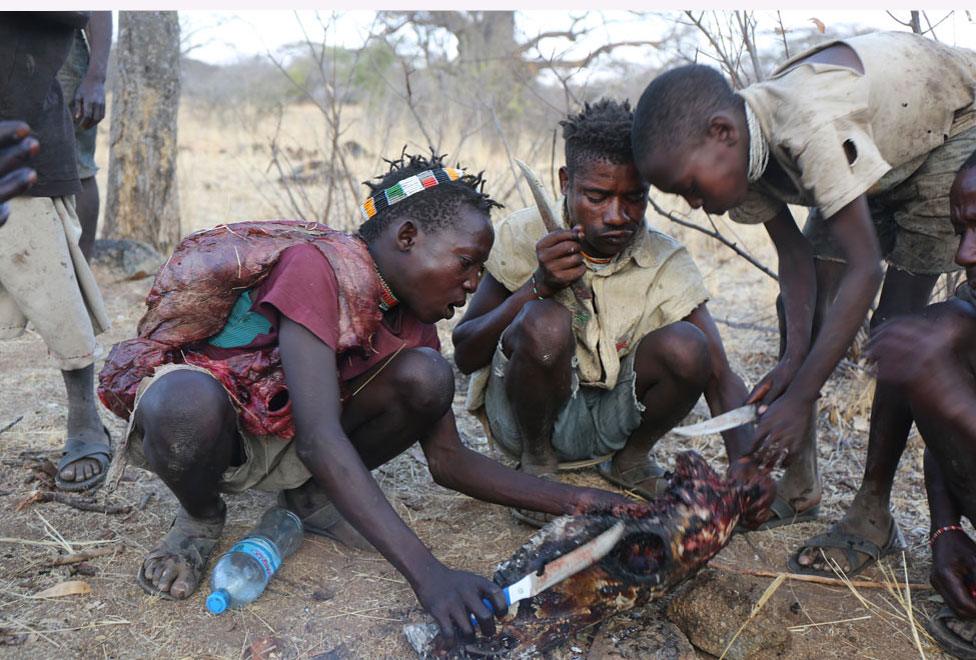
... but they are becoming rarer, because pastoralists are scaring them away
Among my travelling companions was Tim Spector, Professor of Genetic Epidemiology at Kings College London, who was keen to find out whether, if he ate like a Hadza, his own microbiome would become more like theirs. So he took samples of his own faeces before and after three days on a Hadza diet, in order to check whether the variety of different bacteria present changed.
The results were impressive. After just three days, the diversity of bacteria in his already healthy microbiome had increased by 20%, and he was able to detect rare forms of bacteria often associated with good health.

Hunters may have to walk several kilometres back from a hunt, carrying their share of the meat
It may take years for Spector's research to reach a definite conclusion about our own optimum diets. But there is a sense of urgency, because things are changing for the Hadza - and fast.
For many years, farmers have been extending their reach into Hadza land. In the last decade they've cleared 160 hectares (395 acres) of woodland each year, woodland that was the Hadza's wild food larder. Pastoralists and their hungry cattle have also been arriving in large numbers, scaring off many of the 30 different wild mammals the Hadza have hunted and eaten for tens of thousands of years.

A hyrax, prior to cooking
For me, though, the biggest surprise was an incursion of a different kind. A 30-minute drive from the porcupine hunt was a mud hut at a crossroads of tracks - and inside, shelves filled with cans of sugary soft drinks and packets of biscuits. It had taken me nine hours by Land Rover over tough terrain to get here, only to find the biggest brands in the world had made it before me.
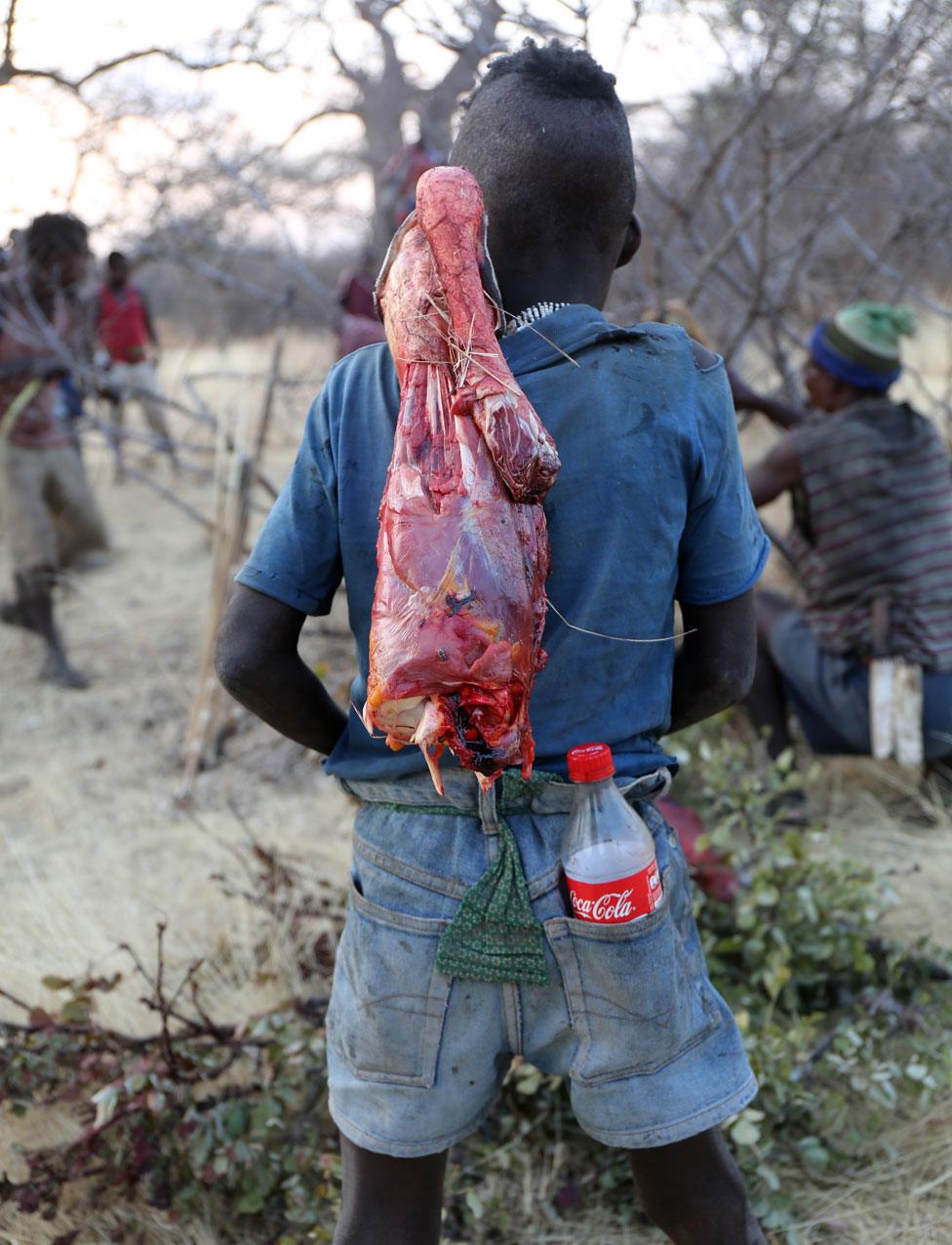
Sugary soft drinks are already on sale in the Hadza's territory
Zigwadzee however was keeping the flame of Hadza wisdom alive, which would mean a swift and efficient end for the porcupine. Face-to-face with the animal, Zigwadzee nudged it with a stick and called to it: "Come out porcupine… come to me... come here porcupine!" Then, not one but two crested porcupine emerged.
The most striking thing wasn't the long black and white quills on their lumbering bodies - which at 30kg each were bigger than you might think - it was the noise. A wall of sound, of quills rattled in warning. It filled the air and intensified as Zigwadzee delivered a few hard blows to the porcupines' heads. And then it was all over.

Hadza hunters share everything. Theirs is an egalitarian society. They have no leadership structures and with meat, especially, there's an obligation to divide what is caught equally. The offal, the heart, liver and lungs were cooked on the spot and eaten immediately, the butchered carcasses taken back to the camps and distributed.
As I watched, and nervously nibbled on a piece of porcupine liver, I realised I'd watched something special. A hunt, and a meal, that had allowed me a connection to the ancient past.

Bows are often the only possession a Hadza male will own - animal tendons are wound round the wood and the fat released helps to keep it in good condition
All photographs courtesy of Jeff Leach, King's College London
See also: I spent three days as a hunter-gatherer to see if it would improve my gut health, external

Join the conversation - find us on Facebook, external, Instagram, external, Snapchat , externaland Twitter, external.